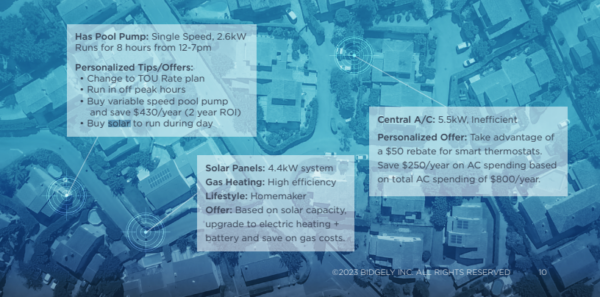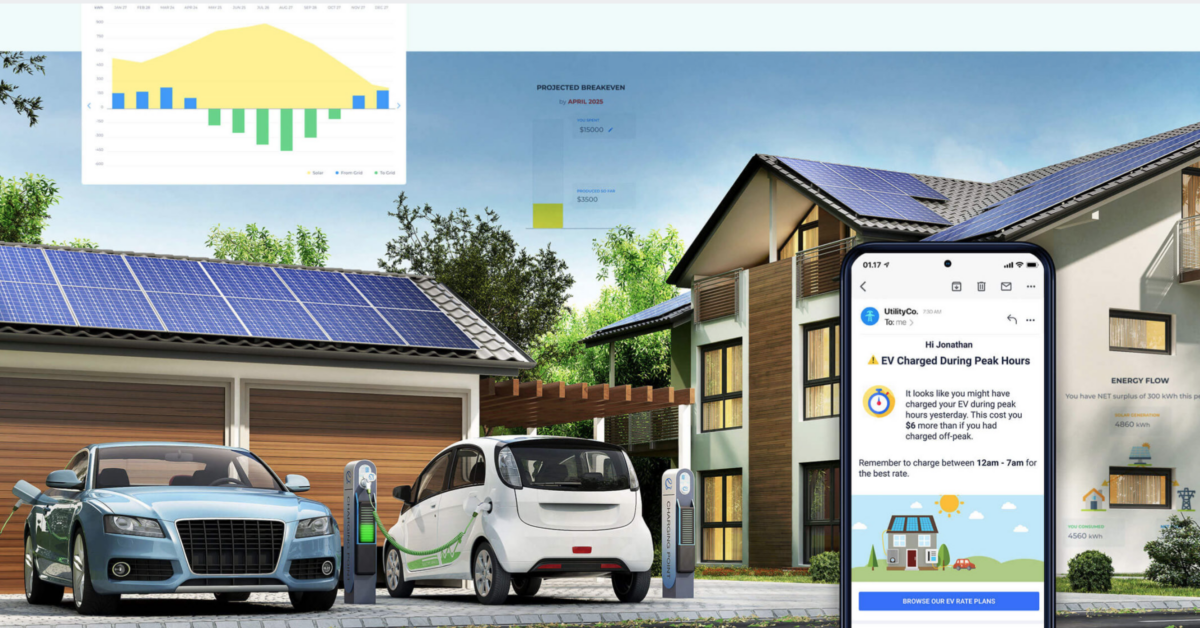The intermittency of renewable energy created the use of distributed energy tools such as energy storage and virtual power plants. But with new technologies at the grid and consumer level, utilities and regional transmission operators have turned to grid controls and maintenance software to orchestrate, aggregate and monitor the dispatch of clean power when the sun stops shining and the wind stops blowing.
Bidgely, a California-based energy data software start-up company, released the 8760 Energy Model, a data set and report that provides utilities and industry stakeholders with behind-the-meter energy data tracked at the hourly level throughout the year.
The data tool provides a new approach to grid planning, EV charging analytics, non-wire alternatives and load forecasting that aggregates the data across a full year, 24 hours per day.
With insight on how the daily load curve of each utility customer contributes to the grid, utilities have the ability to identify trends, predict future grid patterns, encourage grid-stabilizing customer behaviors and understand the load impact on grid assets, such as distribution transformers, feeders and substations, the company says.
To download the full Bidgely 8760 report click here.
“Energy consumption is constantly changing. As a result, utilities must develop agile responses to evolving pressures on the grid,” said Abhay Gupta, chief executive officer of Bidgely. “Our 8760 insights let utilities see their grids in high definition across time. They can use this insight to develop new rates, products, services and infrastructure investments that deliver greater value on both sides of the meter.”
With 8760, energy consumption data patterns are broken down by the hour and illustrated across 12 different appliance types, which includes EV charging and residential solar systems, across different geographic areas and utility rate plans. This analysis enables utilities to identify trends and plan strategically for grid management, especially based on daily challenges from the intermittency of renewables, EVs and extreme weather events that can affect predictability on the grid level.

In 2022, the system pulled data from the record-setting heatwave in the Pacific Northwest, when the region saw sustained daily temperatures of 100 degrees for consecutive days. The data was provided to the regional utilities to allow for future grid planning and resiliency measures as much of the U.S. sees rises in temperature and extreme weather due to climate change.
Using Bidgely’s data system, utilities can implement or track non-wire alternatives for managing the grid and target customers with load-shifting programs such as virtual power plants and demand response.
At the consumer level, 8760’s load curves analyzed will show grid asset resources with spare capacity and those regions near capacity. The data shows when a customer is running a pool pump and for how long the appliance will run, revealing a targeted list of utility customers who run the same appliance at peak times. This enables the utility to offer the customers load-shifting programs and incentives for lowering the usage of such home appliances as seen in the accompanying Bidgely screenshot.
For consumers running the same appliance, the 8760 data can make recommendations for the utility’s customer to change their Time-of-Use (TOU) rate plan, run the appliance during off-peak hours, buy an energy efficient appliance, or add a residential solar array for additional energy savings.
Bidgely’s UtilityAI and other solutions are used by more than 30 North American electric and gas utility companies and 29 million households that enable “future ready” means for grid flexibility. The company is partnered with digital meter provider Itron as well as EnergyHub and Salesforce for its artificial intelligence-functions and cloud-based accounting systems used in UtilityAI systems.
Founded in 2011, the company is based in Los Altos, California and has raised $82.7 million in growth equity from Constellation, Khosla Ventures, Moore Strategic Ventures, Future Energy Ventures, Innogy and Accurant International.
This content is protected by copyright and may not be reused. If you want to cooperate with us and would like to reuse some of our content, please contact: editors@pv-magazine.com.









By submitting this form you agree to pv magazine using your data for the purposes of publishing your comment.
Your personal data will only be disclosed or otherwise transmitted to third parties for the purposes of spam filtering or if this is necessary for technical maintenance of the website. Any other transfer to third parties will not take place unless this is justified on the basis of applicable data protection regulations or if pv magazine is legally obliged to do so.
You may revoke this consent at any time with effect for the future, in which case your personal data will be deleted immediately. Otherwise, your data will be deleted if pv magazine has processed your request or the purpose of data storage is fulfilled.
Further information on data privacy can be found in our Data Protection Policy.